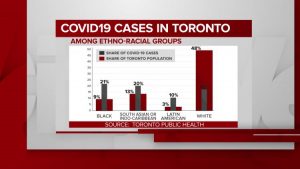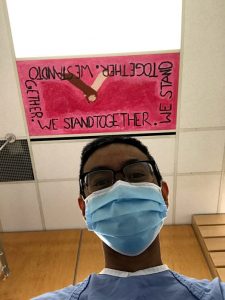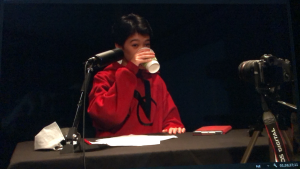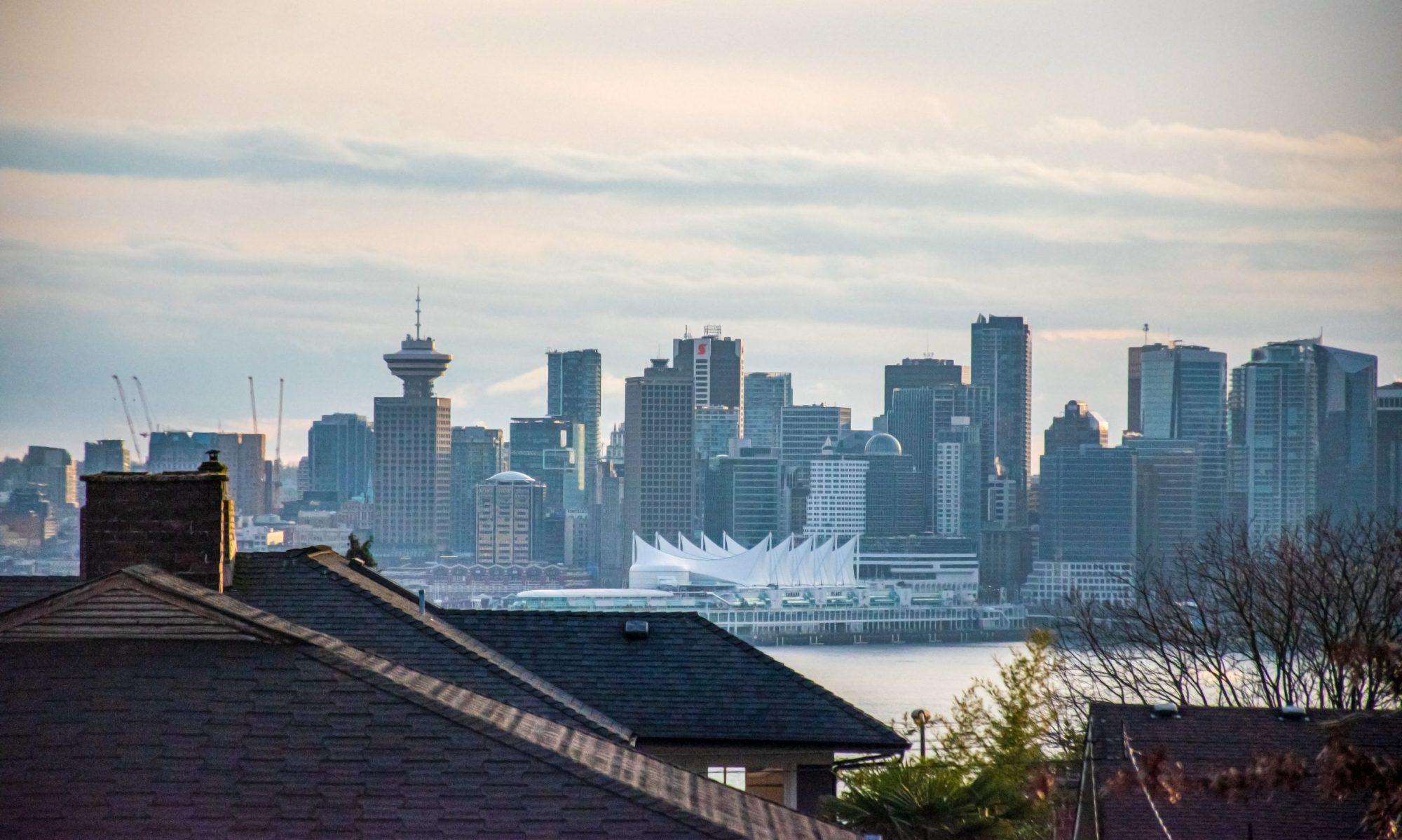In an open letter, Aftab Erfan the director of Dialogue and Conflict Engagement at the University of British Columbia, reflects on “attending to wellbeing and justice [as] complimentary and mutually enforcing.” This comes in the wake of ongoing police brutality and racial inequalities revealed by COVID-19. While I reflect on the ways that justice and healing come hand in hand, I try to stifle my own jaded impulses towards calls for systemic and institutional change. When we talk about intergenerational trauma, to me, the healing comes from social justice and change. The summer has left me skeptical towards calls for systemic change as merely performative activism and allyship. While the media’s recognition of racial inequities is all good and fine, recognition without material benefits is liberal politics that only benefits the colonizer (Coulthard, 2014).

“Twenty-one per cent of [COVID-19] cases are in the Black community, despite the group only making up nine percent of the city’s population. South Asians and Indo-Caribbeans have 20 percent of cases with a population of 13 percent” (Amin & Bond, Jul 31 2020). The availability of this data is a win for Black leaders in Toronto who continuously report that it comes as no surprise. No surprise. Race based data on how COVID-19 has affected communities is still absent in BC and it has taken tremendous work by Black activists in Toronto for these inequalities to be quantified and revealed. As individuals transitioned to the reality of COVID-19, spending more time at home, tuned in, and socially distanced, the media bombarded us with images of black bodies brutalized. Racial inequalities relating to policing and a new call for the abolition of the policing institution. I saw a material impact with abolition. Living in Vancouver, the protests and the US government’s crackdown in Seattle felt so close to heart and home yet so far in the material actions I could take. I was settled to support where I could and distance myself emotionally where it necessary. Distancing became easy; physically, socially, emotionally. This served my family poorly as they sat halfway across the world from me in Manila.
My Lola would call me on Facebook often throughout the summer. The city socialite, my Lola knew how to navigate new updates to social media before I did. Quarantine has made her particularly antsy. An active member of her community, my Lola refused to be alone. When the Duterte government gave the police new powers to fine and imprison anyone caught on the streets or outside you would still catch her yelling gossip across the road to the neighbors. There was one night she called my Nanay bragging about how the police almost caught her and that she could have spent the night in prison. The beginning of quarantine often had that light-hearted tone to our overseas conversations. We had more time for each other, work was less of a priority.  As time passed the content and tone of our conversations turned bleak. “Balong, tita ____ passed away today,” “Will, ____ died yesterday.” I found solace in that their names were not prevalent in my memory but great sadness that I lost an opportunity to reconnect with a relative. Facebook’s market penetration in the Philippines is ninety-six percent (Sanchez, 2020). I don’t consider this a testament to the business acumen of the Facebook team but rather a global need for low cost communication with Families divided by seas and continents. Too often families have used social media as a long-term solution for the colonial legacy of family separation within migration policy. Even if these families were to be reconnected in person, how do you catch up on 23 years of missed time? As time continued to pass, the economic impacts of COVID on my Lola became more prevalent. My Grandmother rented out the front of her home in order to help pay for her living expenses and home. Where a front door should have been stood a small motorcycle store in its place. Spare parts for the many tricycle drivers in the city who drive tourists and individuals in a rush. When COVID hit Manila, like many other cities in the world, tourism took a dive and the small tricycle parts store took a hit as well. My family found themselves sending more remittances to my grandmother. When my Nanay told me about my Lola’s situation I was jaded to the absence of financial aids the Philippine government had for seniors and even more jaded to the historical legacy of colonialism in the Philippines. How could a country with such great material wealth be so unable to help those who need it?
As time passed the content and tone of our conversations turned bleak. “Balong, tita ____ passed away today,” “Will, ____ died yesterday.” I found solace in that their names were not prevalent in my memory but great sadness that I lost an opportunity to reconnect with a relative. Facebook’s market penetration in the Philippines is ninety-six percent (Sanchez, 2020). I don’t consider this a testament to the business acumen of the Facebook team but rather a global need for low cost communication with Families divided by seas and continents. Too often families have used social media as a long-term solution for the colonial legacy of family separation within migration policy. Even if these families were to be reconnected in person, how do you catch up on 23 years of missed time? As time continued to pass, the economic impacts of COVID on my Lola became more prevalent. My Grandmother rented out the front of her home in order to help pay for her living expenses and home. Where a front door should have been stood a small motorcycle store in its place. Spare parts for the many tricycle drivers in the city who drive tourists and individuals in a rush. When COVID hit Manila, like many other cities in the world, tourism took a dive and the small tricycle parts store took a hit as well. My family found themselves sending more remittances to my grandmother. When my Nanay told me about my Lola’s situation I was jaded to the absence of financial aids the Philippine government had for seniors and even more jaded to the historical legacy of colonialism in the Philippines. How could a country with such great material wealth be so unable to help those who need it?
Later into the summer I was particularly watchful for statistics relating to the pandemic. I spent a lot of time in the hospital myself. In July I was diagnosed with Eosinophilic Esophagitis, an illness that is akin to an allergic reaction. I couldn’t eat and I had no energy. After my first round of testing and biopsies I had complications that brought me to the hospital the next day. It was a sunny day despite being so early  in the morning. The emergency room nurse put me in a shared room divided by curtains where many other patients lay waiting to see a doctor. As I sat, fingers numb from what my health implications could mean in the long term, I overheard a conversation a doctor had with a patient. She was a health worker, a hospital cleaner I assume, being tested for COVID due to an alert by the province. After the usual “that felt awful” reaction from a testing swab up the nose, she asked the doctor if it was alright to go back to work. I was immediately horrified in my silence. Without pause the doctor said “yes, that’s alright.” How could someone test and not immediately quarantine? Moreover, how could a health practitioner support that behavior? I immediately wanted to go back home and escape into my bubble. At the time, I didn’t blame the worker for wanting to go back to work, nor do I blame the doctor for potentially causing another outbreak. I blamed the systems and structures that force workers to pay rent during a pandemic. I blamed the policies and programs that make life unaffordable for families of different circumstances. I blamed the historical injustices that place Black, Indigenous, People of Colour at the front lines of COVID-19. I was jaded.
in the morning. The emergency room nurse put me in a shared room divided by curtains where many other patients lay waiting to see a doctor. As I sat, fingers numb from what my health implications could mean in the long term, I overheard a conversation a doctor had with a patient. She was a health worker, a hospital cleaner I assume, being tested for COVID due to an alert by the province. After the usual “that felt awful” reaction from a testing swab up the nose, she asked the doctor if it was alright to go back to work. I was immediately horrified in my silence. Without pause the doctor said “yes, that’s alright.” How could someone test and not immediately quarantine? Moreover, how could a health practitioner support that behavior? I immediately wanted to go back home and escape into my bubble. At the time, I didn’t blame the worker for wanting to go back to work, nor do I blame the doctor for potentially causing another outbreak. I blamed the systems and structures that force workers to pay rent during a pandemic. I blamed the policies and programs that make life unaffordable for families of different circumstances. I blamed the historical injustices that place Black, Indigenous, People of Colour at the front lines of COVID-19. I was jaded.
Over the summer my not-for-profit, the Kathara Society, had applied to a handful of community grants in order to sustain our work and ensure that our artists and collaborators are sustained during the troubled COVID times. One of the projects that we managed to support is a podcast skillfully run by our younger members. While I would like to say I had a hand in getting the project off the ground, I did the bare minimum of work necessary by applying for the grants that financially support them. The topic of their podcast was to be on Gender, Race, and Colonialism in the context of COVID-19 and Police  Abolition. When it was first pitched to me, I was numb to the terms. I was jaded. The youths wanted creative control anyway and they had the wealth of knowledge from the elders in our non-profit to lean on and who had been helping them. As a non-profit that dealt primarily with Philippine Indigenous Rights in Southern Philippines, we had a board of directors and elders that we regularly consulted for projects and so I wasn’t worried for the youths. The day before their first recording, I had a briefing with the teens about action items and things they needed for support. The conversation was mechanical as I checked off the list of necessary things in my mind but often drifted to other topics as normally expected for young people working on a big project. At one point the conversation drifted to the necessity of trigger warnings at the beginning of each podcast. I paused. “I don’t think you need to have a trigger warning for your podcast, you don’t go into topics like rape or abuse so I’m not sure its necessary,” I said. The response provoked ideas that I am still reflecting on and the reason why I write this now. “Colonialism is a heavy topic and we should state it in the beginning,” one of the youths responded. What I had thought to be a podcast providing basic information about the nature and realities of colonialism, gender, and race had really been a container to process our collective trauma as Black, Indigenous, People of Colour. These teens recognized not only the necessity of talking about these issues, they demanded that the space start with the mutual understanding that we may not want to talk about issues like colonialism. That speaking to race is like Sisyphus rolling a rock up a hill only to have it roll back down.
Abolition. When it was first pitched to me, I was numb to the terms. I was jaded. The youths wanted creative control anyway and they had the wealth of knowledge from the elders in our non-profit to lean on and who had been helping them. As a non-profit that dealt primarily with Philippine Indigenous Rights in Southern Philippines, we had a board of directors and elders that we regularly consulted for projects and so I wasn’t worried for the youths. The day before their first recording, I had a briefing with the teens about action items and things they needed for support. The conversation was mechanical as I checked off the list of necessary things in my mind but often drifted to other topics as normally expected for young people working on a big project. At one point the conversation drifted to the necessity of trigger warnings at the beginning of each podcast. I paused. “I don’t think you need to have a trigger warning for your podcast, you don’t go into topics like rape or abuse so I’m not sure its necessary,” I said. The response provoked ideas that I am still reflecting on and the reason why I write this now. “Colonialism is a heavy topic and we should state it in the beginning,” one of the youths responded. What I had thought to be a podcast providing basic information about the nature and realities of colonialism, gender, and race had really been a container to process our collective trauma as Black, Indigenous, People of Colour. These teens recognized not only the necessity of talking about these issues, they demanded that the space start with the mutual understanding that we may not want to talk about issues like colonialism. That speaking to race is like Sisyphus rolling a rock up a hill only to have it roll back down.
I don’t always want to talk about the structural and institutional impacts of racism on my existence but if I don’t have spaces and places where I can think and talk about it, how will I find solace in the justice that comes with the BIPOC leaders making changes? By stating colonialism as traumatizing, these youths are recognizing the historical legacy it has had and opening the space they are creating as a site of healing. The work they are doing is healing work. The guests and the elders that they are interviewing are trying to heal and are offering ways to heal as well. “Attending to trauma is a profoundly radically act” and future planners can learn from these youths in their willingness to hold and give space to healing (Erfan). In the future, healing from collective traumas may be more digital and more youthful than we imagine.
